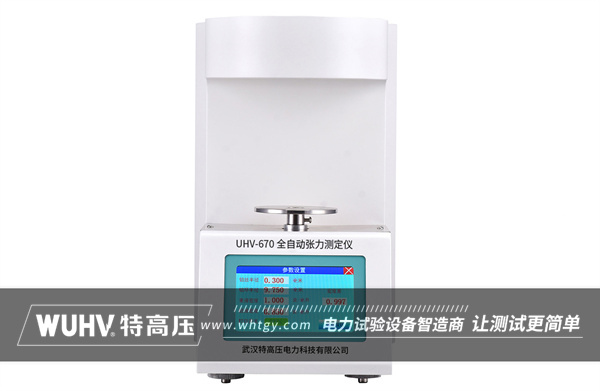The surface tension tester under the UHV power company can help many power workers conduct various power tests more conveniently.

The surface tension will disappear or significantly decrease in the following situations:
Reaching critical temperature:
When the temperature reaches the critical temperature (Tc) of the liquid, the boundary between the liquid and gas phases disappears, and the liquid no longer has a clear surface, so the surface tension will decrease to zero. This process corresponds to the critical point in the phase diagram where the liquid phase directly transitions to the gas phase.
Extreme high pressure:
Under extremely high pressure, the interactions between liquid molecules may change, resulting in a decrease in surface tension. However, this effect is usually not significant under low pressure and requires a high pressure environment to cause significant changes.
Add surfactants:
Surfactants are a class of compounds with amphiphilic properties (both hydrophilic and oleophilic) that can significantly reduce the surface tension of liquids. They reduce surface tension by adsorbing onto liquid surfaces, altering intermolecular interactions.
Impurities affect:
The presence of certain impurities or pollutants can alter the surface tension of liquids. For example, the surface tension of clean water and water containing soap solution is different, with the latter significantly reduced due to the action of soap molecules.
The interaction between liquid and solid surfaces:
When a liquid comes into contact with a solid surface, the properties of the solid surface will affect the surface tension of the liquid. If the surface tension of a liquid is less than the critical surface tension of a solid, the liquid can wet the surface of the solid and form a spreading pattern. On the contrary, if the surface tension of a liquid is greater than the critical surface tension of a solid, the liquid cannot wet the surface of the solid.
In summary, surface tension will disappear or significantly decrease when it reaches the critical temperature of the liquid, extreme high pressure, the addition of surfactants, impurities, and the interaction between the liquid and solid surfaces. These changes not only affect the physical properties of liquids, but also have significant impacts on their behavior in practical applications.



















